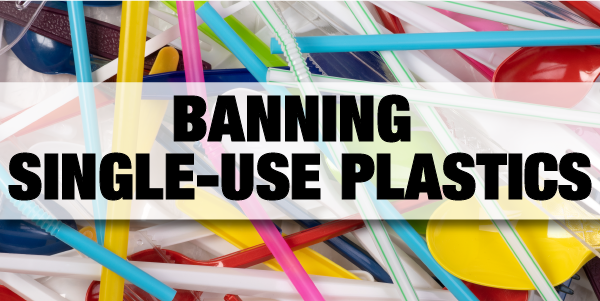The new Globally Harmonized System of Classification and Labeling (GHS) is now ready for worldwide implementation. Many countries have already adopted the GHS, while the USA and Canada are just beginning the task of harmonizing existing regulatory regimes within the GHS framework. Whereas the question on most people’s minds these days is “When will GHS be implemented?” concern should focus on how GHS will affect our commerce and safety in our workplaces. Target audiences for the GHS include consumers, workers, and emergency responders. GHS will benefit these folks. Though for the employer or Environmental, Health & Safety (EHS) Manager, once you’ve educated yourself in GHS principles, expect to spend much time sifting through the data needed to correctly categorize chemicals and their mixtures per the new GHS criteria. You should also expect to spend much money and time applying new GHS labels to chemical containers, reformat existing MSDSs to the sixteen sections Safety Data Sheet (SDS) and retrain workers how to interpret GHS hazard information. Do not expect a GHS shift to magically make your workplace safer, since GHS is not intended to harmonize risk assessment procedures or risk management. This gradual process of GHS assimilation should however eventually help in the decisions process.
The advantage of GHS is the way it identifies the intrinsic hazards found in chemical substances and mixtures and conveys this hazard information through a standardized use of statements, symbols and signal words on labels and SDSs. GHS labels include product identifier, signal word (DANGER or WARNING), hazard and precautionary statements with associated pictograms and supplier identification. This is a vast improvement over existing systems in North America. The jurisdictional agency responsible for GHS implementation, OSHA or Health Canada, may opt to include risk phrases, first-aid procedures, and a reference to the SDS. Health Canada may further opt to maintain the distinctive hatched border that is mandatory for a WHMIS supplier label. Yes, this additional information is good and important for enhanced occupational health and safety. Though for the average user, it may be so overwhelming that it will be simply ignored.
The GHS SDS is also a vast improvement over existing MSDS formats in North America. The American National Standards Institute (ANSI) MSDS standard (ANSI Z400.1-2004) was modified to adopt the GHS 16-section SDS format. For the first time since the introduction of the Hazard Communication Standard (HCS), or Workplace Hazardous Materials Information System (WHMIS), there will be a standardized format. Users will always be able to locate the information they need in the same section on every SDS. However, the GHS SDS will contain additional technical data, making it a document written by technical professionals for technical professionals. It is doubtful that it will be read by the average workplace employee even though it contains important information to protect human health and safety.
GHS classifications are criteria based. GHS criteria are semi-quantitative or qualitative, and “expert judgment may also be required in interpreting data for hazard classification of substances, especially where weight of evidence determinations are needed.” There are 16 classes based on physical hazards, 10 based on health hazards, and 2 based on environmental hazards. These classes are further divided into ranking categories that represent varying severity of hazard. A Category 1 in GHS represents most severe, or worst, case. So if in your workplace you rank risks using either the traditional Hazardous Materials Identification System (HMIS), or the National Fire Protection Association (NFPA) NFPA 704 system, or both, then prepare yourself for ranking discrepancy and confusion in the workplace. As example, compare this ranking for flammability.
|
Flammability Criteria |
GHS Category |
NFPA 704 Rating |
HMIS III Rating |
| Flash point < 73°F(23°C) and initial boiling point 100°F(37.8°C) |
1 or 2 |
4 |
4 |
| Flash point < 73°F(23°C) and initial boiling point 100°F(37.8°C) and Flash point > 73°F(23°C) and < 100°F(37.8°C) |
2 or 3 |
3 |
3 |
| Flash point ≥ 100°F(37.8°C) and < 200°F (93.4°C) |
3 or 4 |
2 |
2 |
| Flash point > 200°F(93.4°C) and will burn in air when exposed to a temperature of 1500°F(815.5°C) for a period of 5 min. |
None |
1 |
1 |
When GHS is finally adopted by OSHA, then by Health Canada, be sure these agencies will implement performance based standards. As an employer or EHS Manager, whether you are looking forward to the new challenges that GHS will confront you with or not, it still remains that a successful and functional workplace safety program is based on six principles:
- All injuries and occupational illnesses can be prevented
- Safety is a line-management responsibility
- All construction and operating exposures can be reasonably safeguarded
- Line management has a responsibility to train all employees to work safely
- Preventing injuries and incidents is good business
- Working safely is a condition of employment
For more information about GHS, news and updates, check out this link.






 ICC USA
ICC USA ICC Canada
ICC Canada
The OMB was supposed to complete its final review by January 24, 2012. Instead they have posted that the review period has been “extended” indefinitely. That means chemical manufacturers, employers and employees will be waiting a while longer and we don’t have any indication how long.
Thank you for your comment. Yes, it is true, the OMB has extended the review. Stay tuned for more updates.